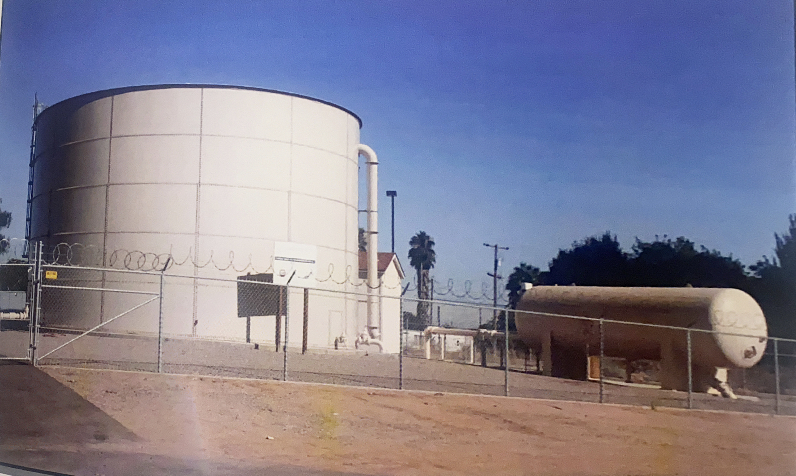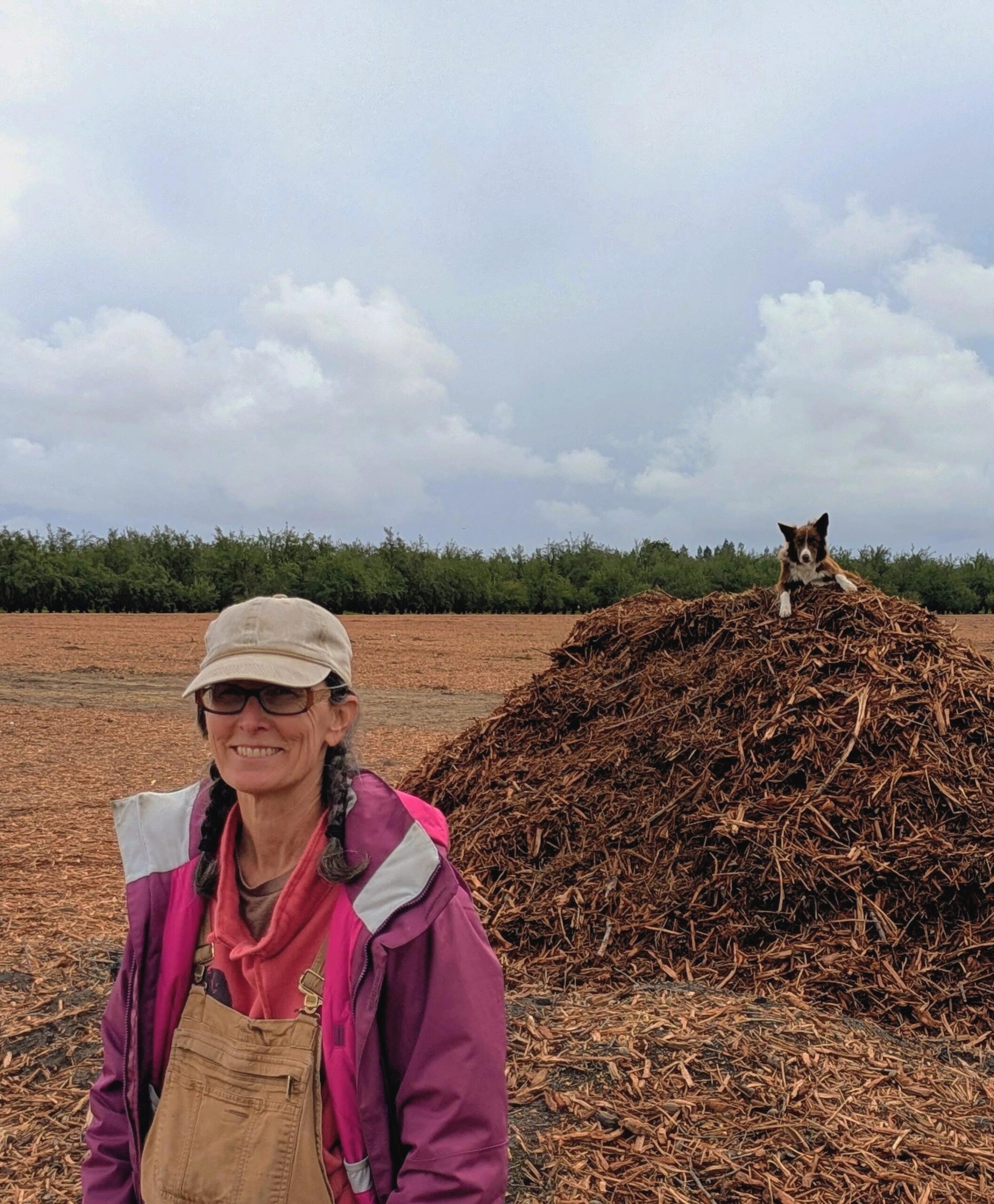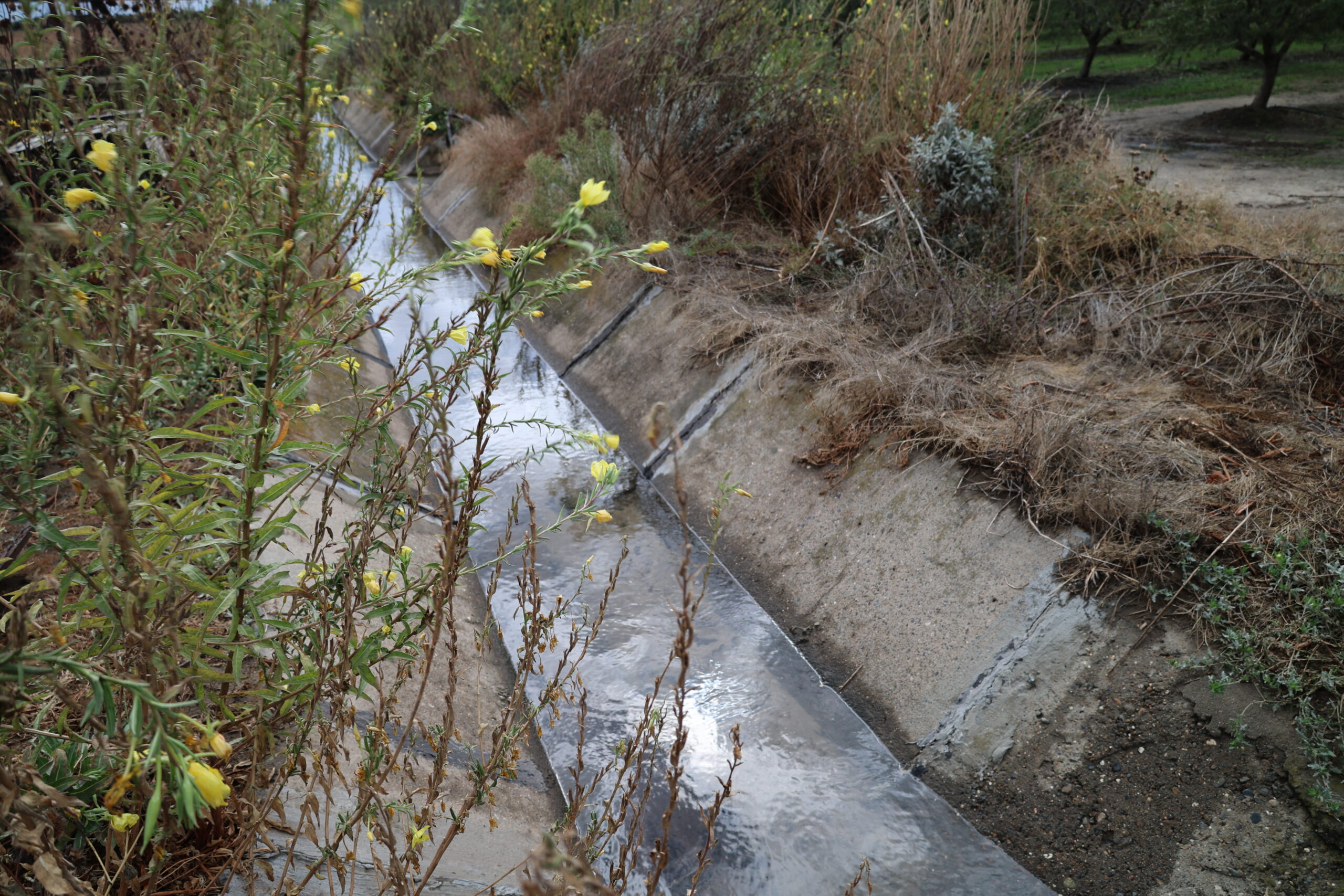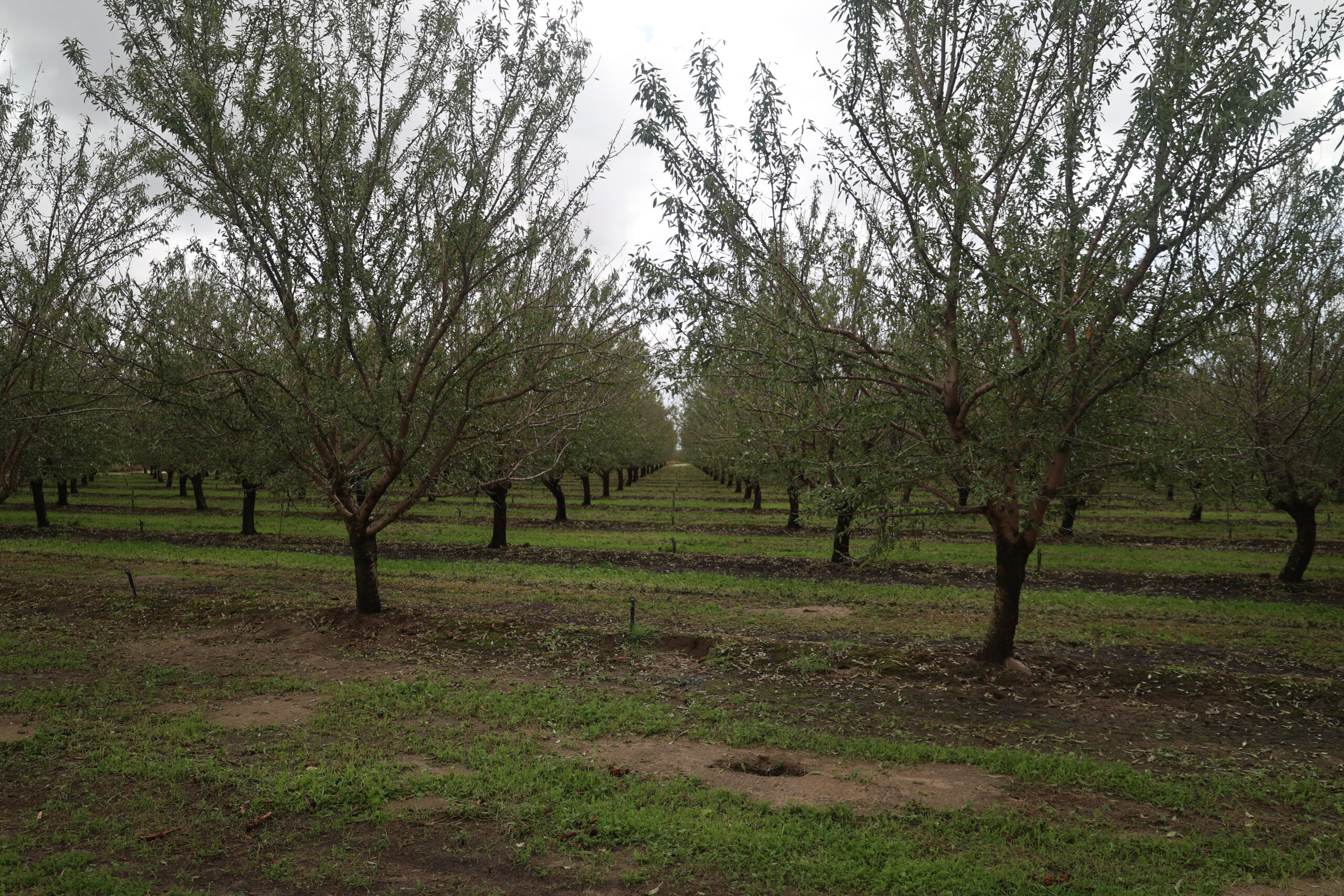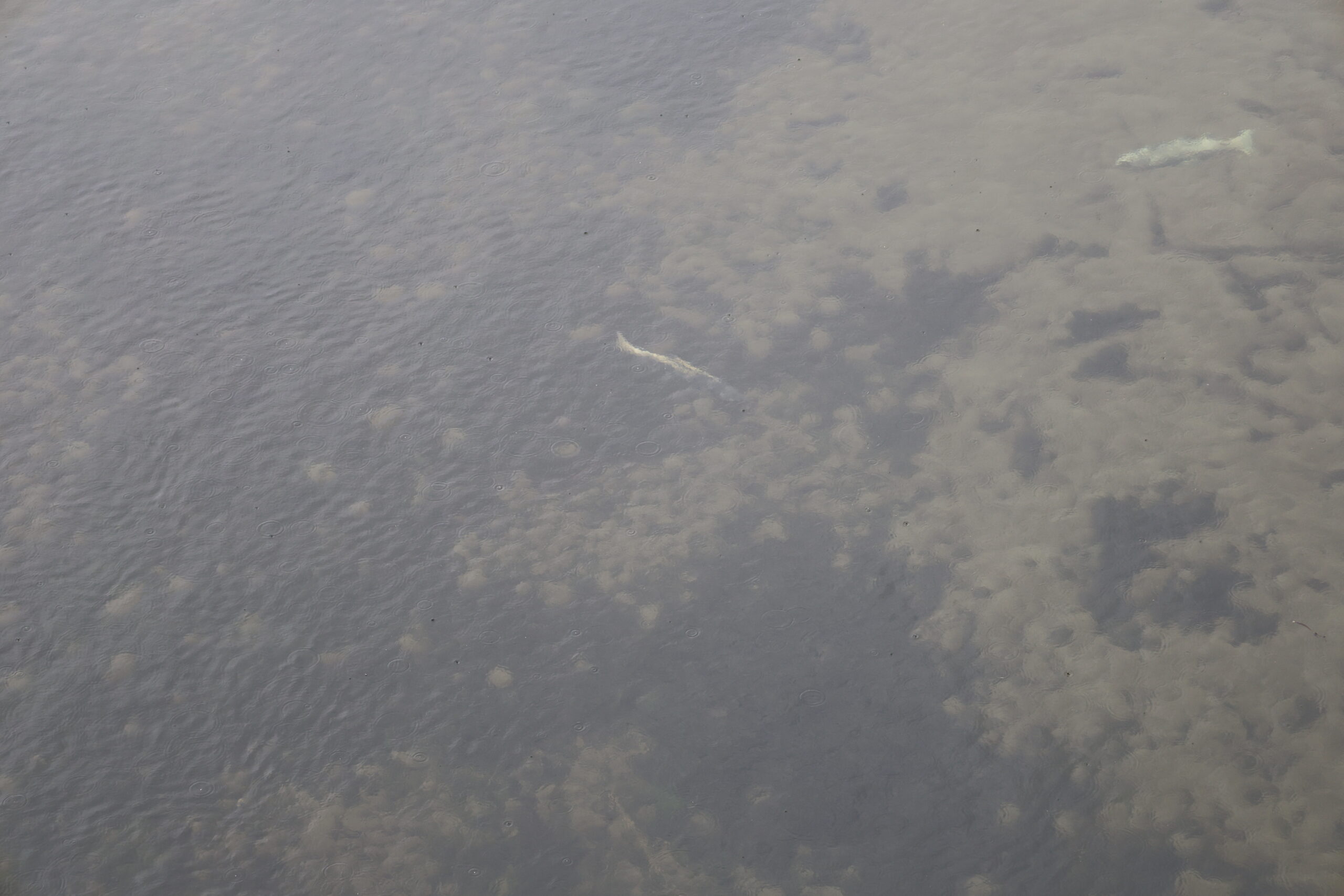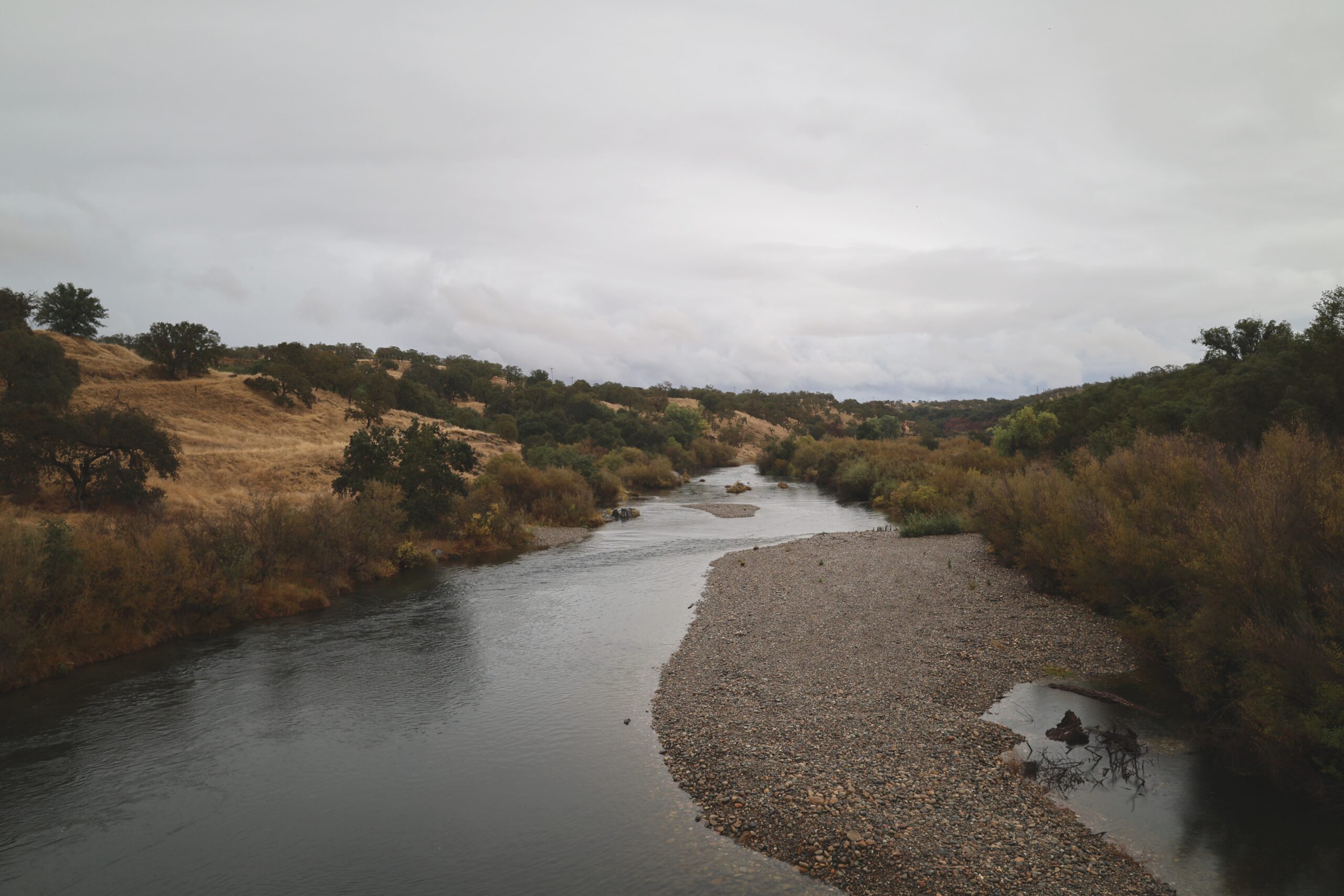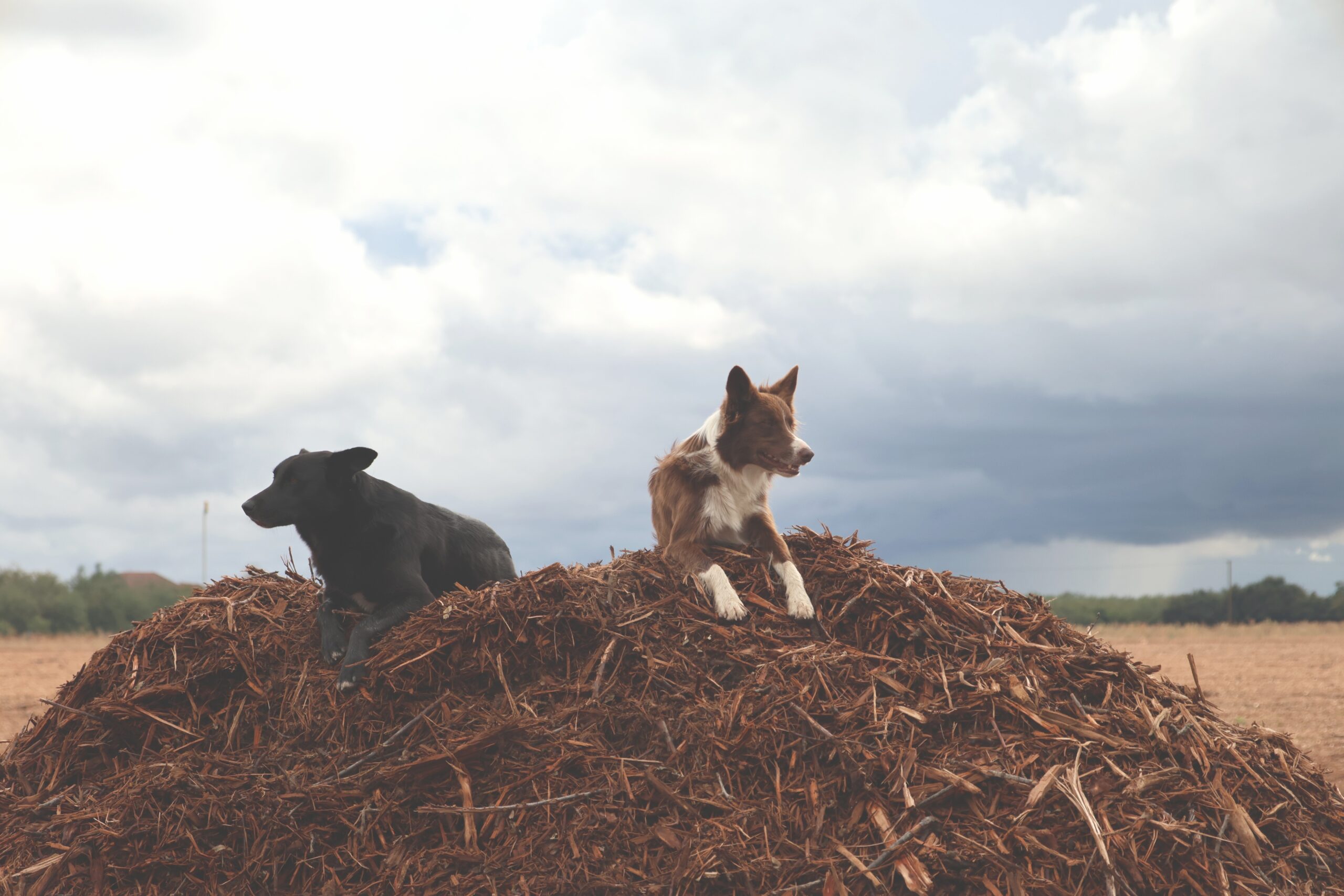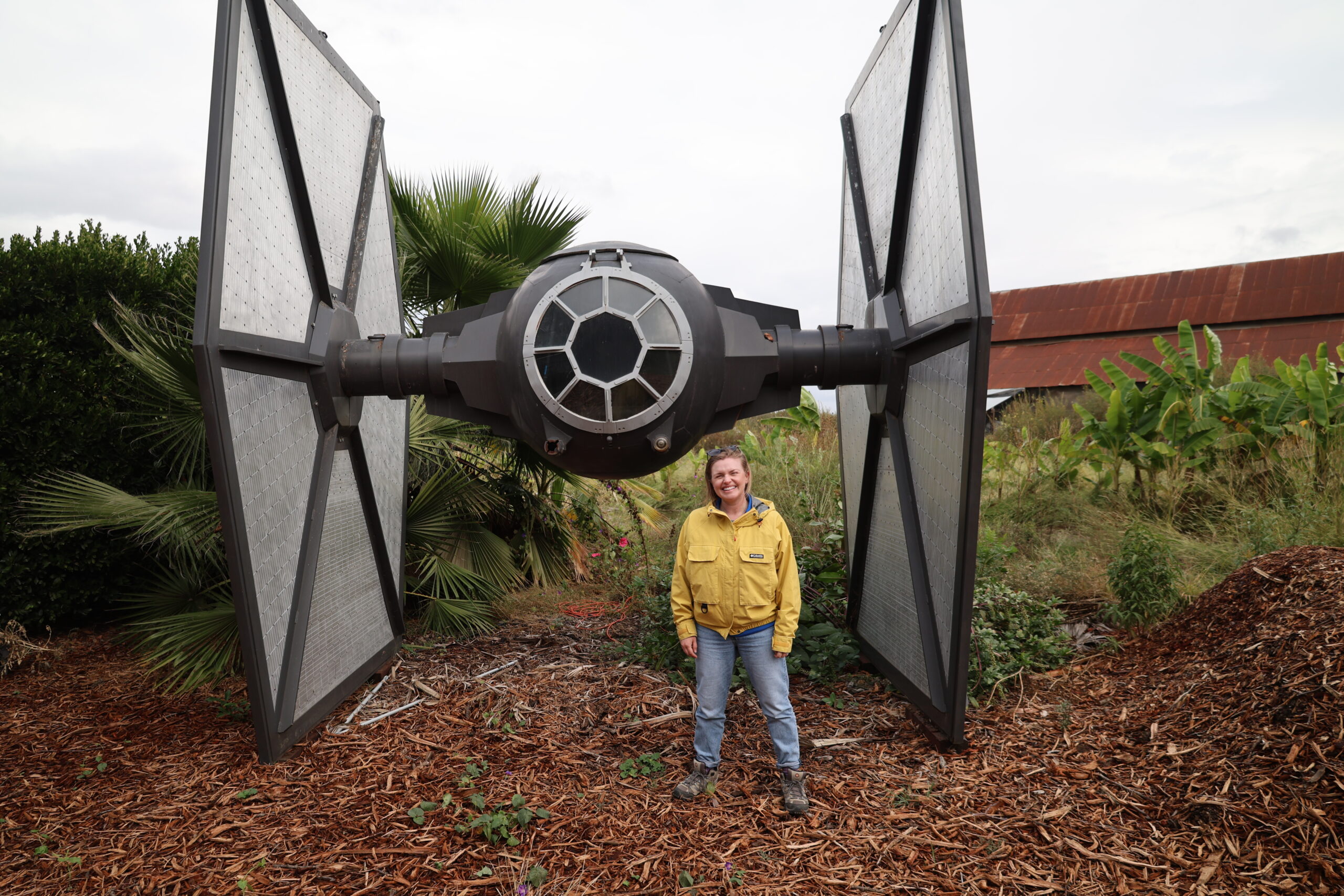On October 14th, more than 30 Sustainable Conservation community members, donors, Board members, and staff piled into a tour bus for a jam-packed day of sightseeing cutting-edge climate resilience projects throughout the Central Valley. The Central Valley is one of the world’s most productive agricultural regions and a critical ecological corridor for the West Coast. Because of its integral role in California’s water, food, and wildlife habitat, implementing climate resilience solutions in the Valley can deliver outsized benefits for communities and ecosystems. Revisit the journey with us in this quick “Notes from the Field” blog!
1st Stop: Fairmead Community and Friends
Speakers at this site:
- Barbara Nelson, Fairmead Community and Friends President
- Vickie Ortiz, Fairmead Community and Friends Secretary
- Indolfo Vizcarra, Fairmead grower
- Roshni Katrak-Adefowora, Sustainable Conservation Senior Data Specialist
The first stop of the day was Fairmead, an unincorporated community in Madera County that has dealt with prevalent water insecurity since the mid-20th century. Exclusionary policies, limited flood protection, and excessive groundwater pumping by nearby agriculture have left the community vulnerable to both drought and flooding, with many residents facing dry or contaminated wells and unreliable tap water. In response, local leaders formed grassroots community group Fairmead Community and Friends (FCF) in 2007 to advocate for equitable water access and sustainable solutions for their community. The tour bus stopped at FCF President Barbara Nelson’s residence for the group to learn about FCF’s latest collaboration with Sustainable Conservation and several local and state partners on the Fairmead Groundwater Resilience Project.
The Fairmead Groundwater Resilience Project is a collaborative effort to engage the community in identifying opportunities to repurpose agricultural lands to less water intensive uses that also provide additional benefits to Fairmead. The project will transform a 17-acre orchard into several components, including a multi-benefit stormwater basin that will capture and store stormwater to reduce flood risk, replenish local aquifers, restore native habitat, and provide Fairmead residents with their first publicly accessible green space.
This project reflects years of dedicated community organizing and partnership-building by FCF, whose persistence has brought together nonprofits, local government, and engineers in support of a shared vision for Fairmead’s water future. This work can serve as a model for how community-driven leadership can guide equitable, multi-benefit groundwater resilience projects across the San Joaquin Valley. Nelson, along with FCF Secretary Vickie Ortiz and orchard landowner Indolfo Vizcarra, spoke with the group about the project’s goals and the community’s ongoing journey toward water security and resilience.
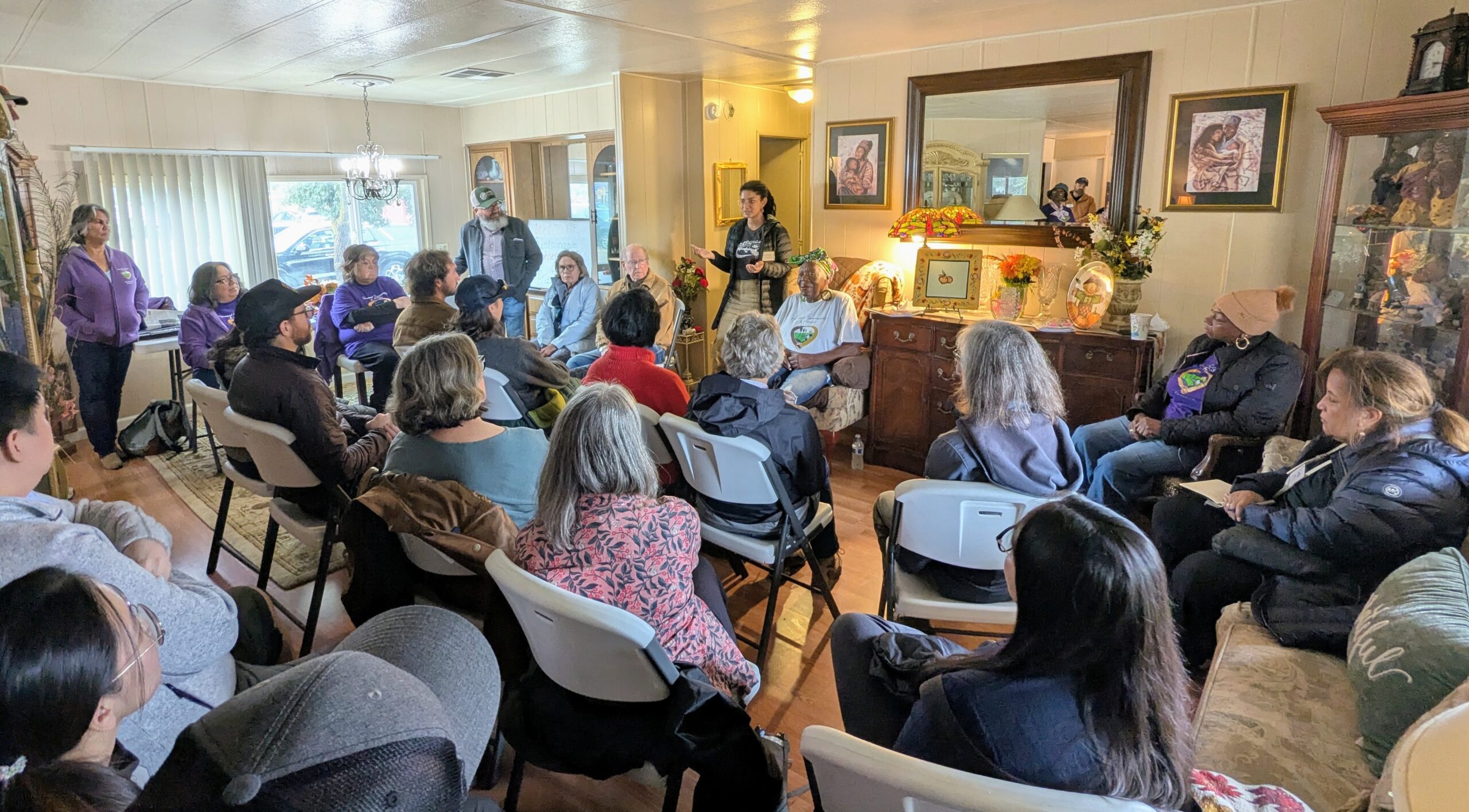
Photos clockwise starting at the upper left:
- Roshni Katrak-Adefowora addressing the tour group
- Fairmead water tank. Credit: Barbara Nelson
- A groundwater recharge project at Ball Ranch near San Joaquin River in Madera County, California. Credit: Odin Abbott / California Department of Water Resources
2nd Stop: Gemperle Orchards
Speakers at this site:
- Christine Gemperle, Ceres almond grower
- Richael Young, Sustainable Conservation Senior Director, Water for the Future
Next, the tour bus drove north to Ceres to visit longtime Sustainable Conservation partner Christine Gemperle on her almond orchards. Since the tour came on the heels of the first rainfall of the season, the group was able to see active groundwater recharge on one of her orchards. Gemperle’s long track record with safely recharging excess surface water on her orchards has provided water managers and fellow growers with invaluable data and anecdotal experience with the still relatively new practice. Her trailblazing conservation ethos has been indispensable in normalizing, scaling, and incentivizing on-farm recharge in the Central Valley.
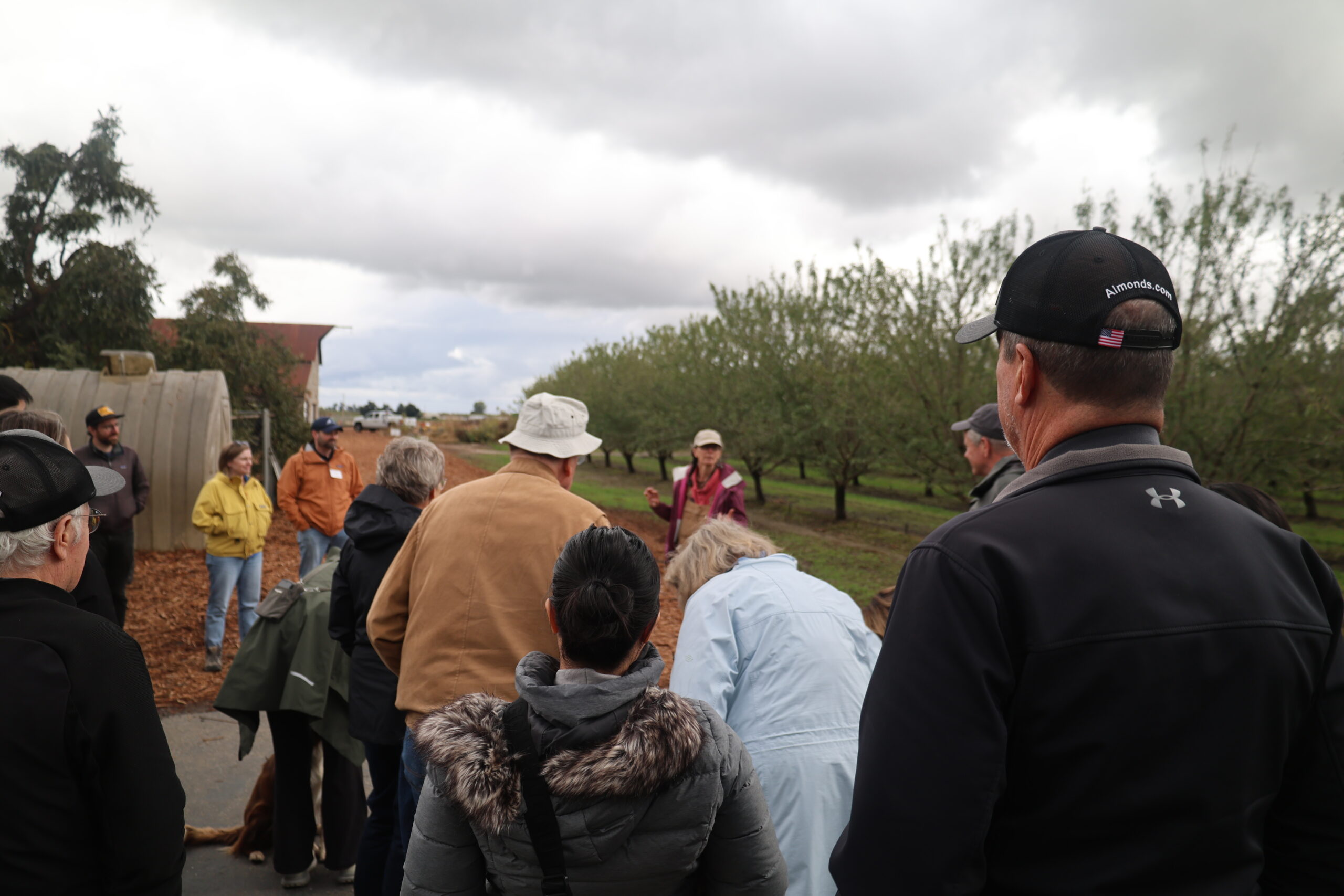
Christine Gemperle addressing the tour group on her Ceres orchards.
In addition to recharge, Gemperle has implemented seasonal cover crops on all of her orchards. She started cover cropping a little over ten years ago, primarily to improve the habitat for local bees, but she has since hosted UC Davis researchers to collect data on cover crops’ positive impacts on soil infiltration rates, surface temperature, and evaporation rates.
Gemperle also recently woodchipped a section of her orchard that was at the end of its productive lifespan, and Sustainable Conservation will work with her to incorporate local surplus dairy manure to catalyze faster woodchip decomposition and boost the organic matter in her soil without leaching excess nitrogen into nearby groundwater.
Photos of Christine Gemperle’s sustainable practices, from left to right:
- Groundwater recharge on almond orchard
- Pollinator-friendly hedgerows lining a conveyance canal
- Cover crops on almond orchard
3rd Stop: Tuolumne River Mainstem Channel Restoration Upstream of Old La Grange Bridge Project and Basso/La Grange Reach Floodplain Restoration & Spawning Habitat Project
Speakers at this site:
- Julia Stephens, Yosemite Rivers Alliance, River and Meadow Restoration Director
- Gretchen Murphey, California Department of Fish & Wildlife, Senior Environmental Scientist
- Pat Maloney, Turlock Irrigation District, Aquatic Biologist
- Michael Frantz, Frantz Nursery, Turlock Irrigation District and Sustainable Conservation Board Member
- Stephanie Falzone, Sustainable Conservation Senior Project Manager, Accelerating Restoration
The final stop of the day was the Tuolumne River near La Grange, where two restoration projects are enhancing the stream’s salmon habitat and floodplain connectivity. The first project the group visited — the Old La Grange Bridge Habitat Restoration Project — was led by Turlock Irrigation District, Modesto Irrigation District, and the San Francisco Public Utilities Commission. Its completion established the furthest upstream salmon spawning grounds in the Tuolumne with dispersed gravel, engineered riffles (fast-flowing, shallow stream sections), and pools with slower water.
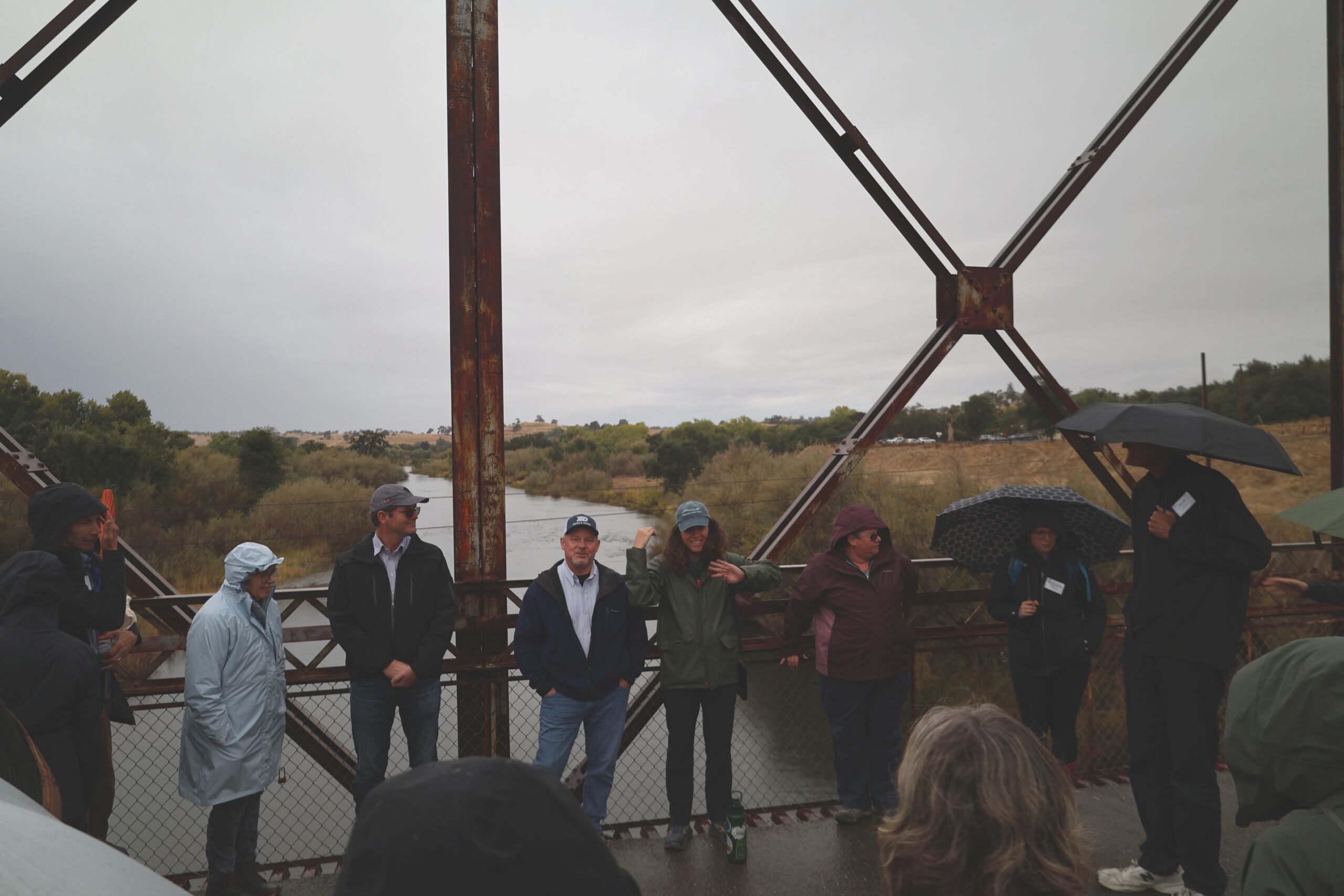
Photos clockwise starting at the upper left:
- Fall-run Chinook salmon seen from the Old La Grange Bridge
- A view of the riffles installed by the Old La Grange Bridge Habitat Restoration Project
- Guest speakers talk about the Tuolumne River restoration projects
After a quick shuttle ride downstream, the group got to see restoration in action at the Basso/La Grange Reach Floodplain Restoration & Spawning Habitat Project, led by the Yosemite Rivers Alliance (formerly Tuloumne River Trust) and the California Department of Fish and Wildlife. The project has 6 main goals: (1) create floodplain rearing habitat for juvenile fish, (2) create spawning habitat and stockpile appropriately sized coarse sediment for future spawning habitat maintenance, (3) reduce non-native predatory fish habitat, (4) restore geomorphic function and sediment transport, (5) increase aquatic microhabitats, food sources, and add stability to the channel by planting native riparian vegetation, (6) design and plan for future salmonid habitat improvements. Connected, seasonally inundated floodplains are prime examples of cost-effective, multi-benefit, nature-based solutions: they reduce dangerous water flows during storms or floods, provide safe, food-rich refuge for growing salmon, and can boost local groundwater supply.
The restoration teams celebrated an exceptionally strong spring run of Chinook this year, and the tour group was lucky enough to witness the final stragglers completing their journey. Visit AcceleratingRestoration.org to learn more about how Sustainable Conservation is striving to simplify and expedite the permitting process for environmentally beneficial restoration projects like this one!

From community-led groundwater resilience to floodplain restoration and sustainable farming, the tour showcased what’s possible when partnerships and innovation drive conservation forward. Join our donor community to stay connected and help us advance more climate-smart solutions across California — and join us for future events like this one!


